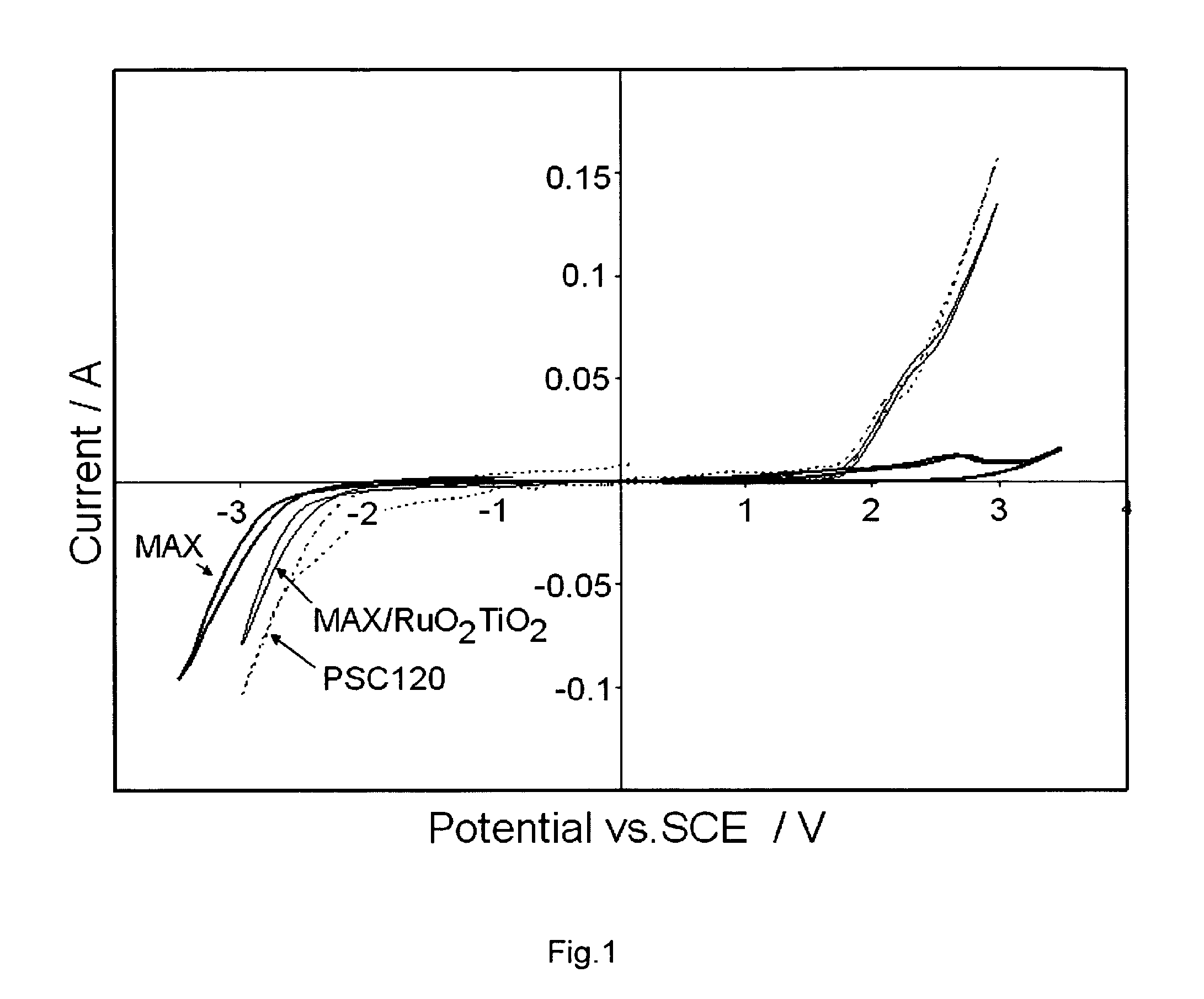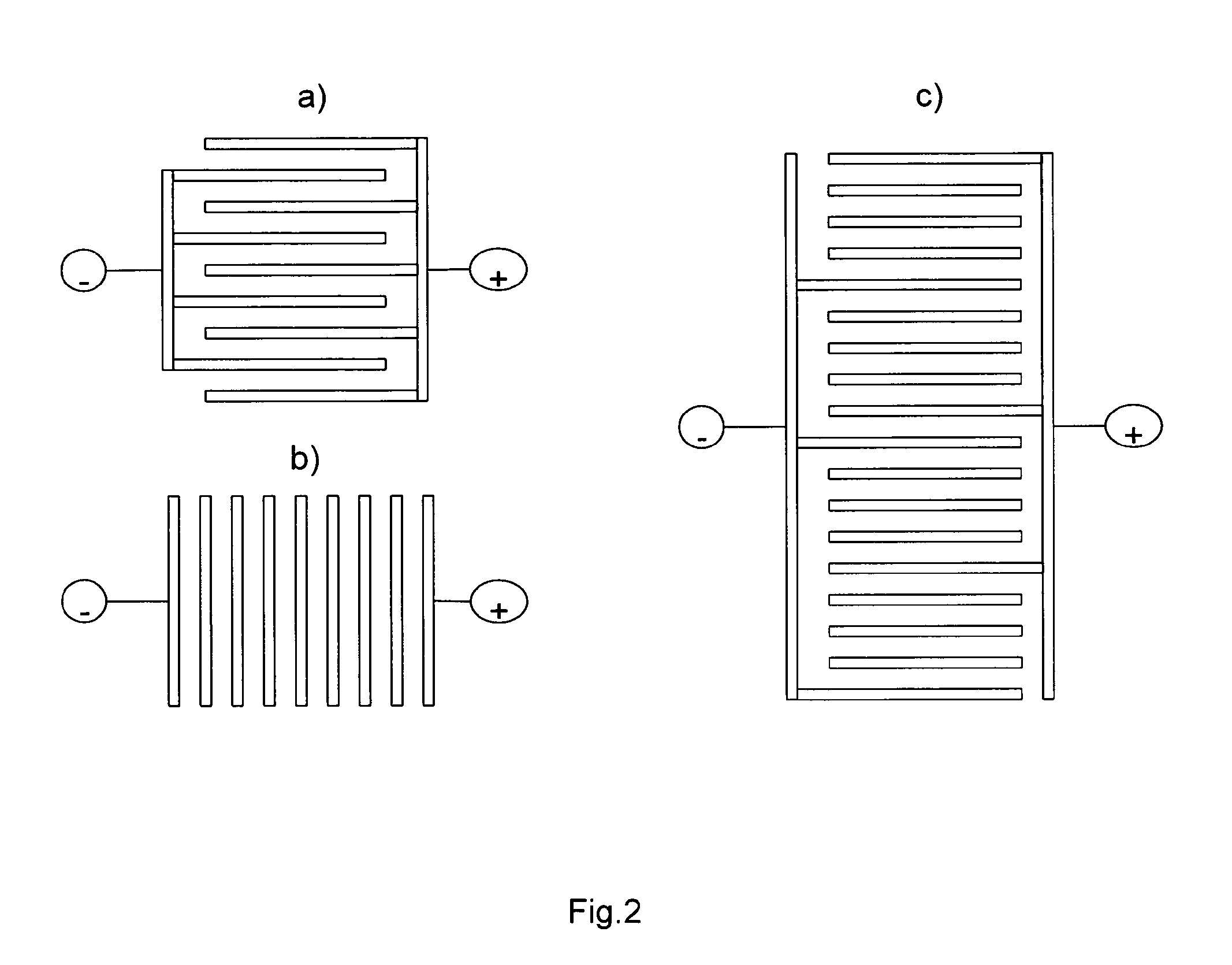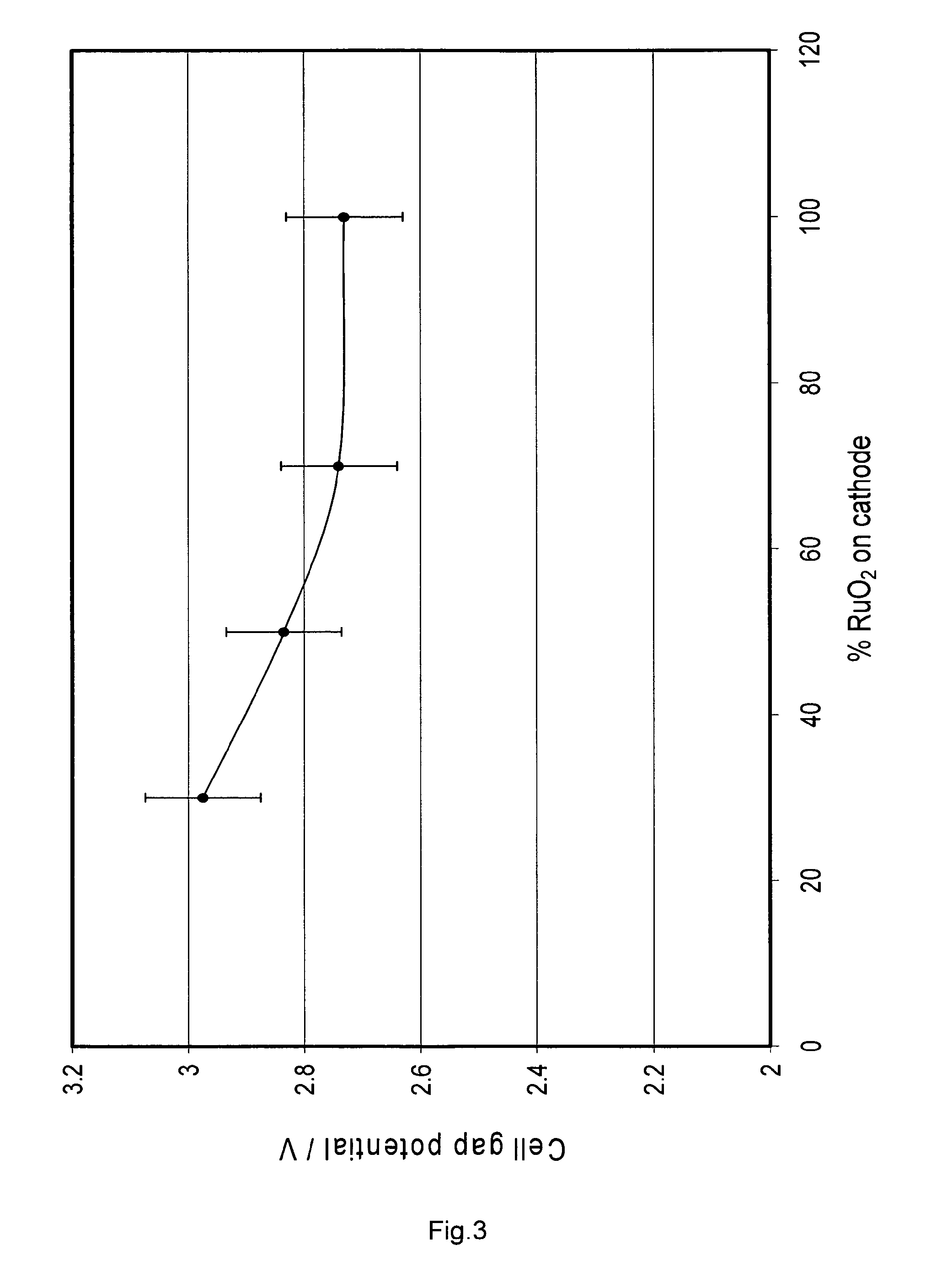Electrode
a technology of electrodes and electrode plates, applied in the field of electrodes, can solve the problems of steel corroding during or after stops in the electrolytic cell, serious harm to the stability of the electrode, etc., and achieve the effect of reducing the risk of corrosion
- Summary
- Abstract
- Description
- Claims
- Application Information
AI Technical Summary
Problems solved by technology
Method used
Image
Examples
example 2
[0074]The same pilot set-up as in example 1 was used. The starting electrolyte used was a water solution containing 120 g / L NaCl, 580 g / L NaClO3, and 4.4 g / L Na2Cr2O7.
[0075]The anode in the electrolyzing cell was a PSC120 (DSA®, TiO2 / RuO2), available from Permascand. The cathode material was MAXTHAL® 312 (4.1 g / cm3) with a machined surface. The distance between the anode and cathode was about 4 mm. The exposed surface area was 30 cm2. A current density of 3 kA / m2 was used throughout the experiments. The results are presented in table 2.
TABLE 2Oxygen (%)CCE (%)Cell voltage (V)Comment2.3993.37Titanium (Grade 1)———Titanium after stop2.2973.00Mild Steel2.4903.01Steel after stop2.31003.28Maxthal ® 312(4.1 g / cm3)2.31003.23Maxthal ® 312 afterstop
example 3
[0076]The same pilot set-up and experimental starting parameters were used as in Example 2. The results are presented in table 3.
TABLE 3Oxygen (%)CCE (%)Cell voltage (V)(Ra, Rz) / μmComment1.81003.35(3.82, 18.06)MachinedMaxthal ®3121.81003.33—After stop2.11003.29(1.79, 11.49)Sand blastedMaxthal ®3122.11003.28—After stop1.71003.36(0.39, 3.05)PolishedMaxthal ®3121.71003.34—After StopThe density of the Maxthal ® 312 was 4.1 g / cm3.
[0077]These experiments clearly give an indication of how the surface roughness affects the cell voltage and oxygen formation. Surface roughness values Ra and Rz between 1 and 3 μm and 5 to 15 μm respectively resulted in the lowest cell voltage according to these experiments.
example 4
[0078]In order to verify that molybdenum oxide and tungsten oxide can be used in combination with ruthenium oxide in a cathodic coating compared to a standard Ti0.7Ru0.3O2 coating, the following experiment steps were performed:
1. A citric acid water (pH2) solution was used as solvent.
2. 0.5% by weight of ruthenium chloride salt was dissolved in the solvent.
3. An equivalent molar amount (based on the amount of ruthenium chloride dissolved) of molybdenum chloride or tungsten chloride was dissolved in a solution.
4. The two solutions were spread on two titanium plates using a small brush.
5. The plates were placed in air at 70° C. for 10 minutes.
6. The plates were placed in air at 470° C. for 10 minutes.
7. Another layer of molybdenum chloride or tungsten chloride solution was spread out on each electrode.
8. The plates were placed in air at 70° C. for 10 minutes.
9. The plates were placed in air at 470° C. for 60 minutes.
[0079]The plates were then used as cathodes in two experiments and co...
PUM
| Property | Measurement | Unit |
|---|---|---|
| concentration | aaaaa | aaaaa |
| polarity | aaaaa | aaaaa |
| stability | aaaaa | aaaaa |
Abstract
Description
Claims
Application Information
 Login to View More
Login to View More - R&D
- Intellectual Property
- Life Sciences
- Materials
- Tech Scout
- Unparalleled Data Quality
- Higher Quality Content
- 60% Fewer Hallucinations
Browse by: Latest US Patents, China's latest patents, Technical Efficacy Thesaurus, Application Domain, Technology Topic, Popular Technical Reports.
© 2025 PatSnap. All rights reserved.Legal|Privacy policy|Modern Slavery Act Transparency Statement|Sitemap|About US| Contact US: help@patsnap.com



